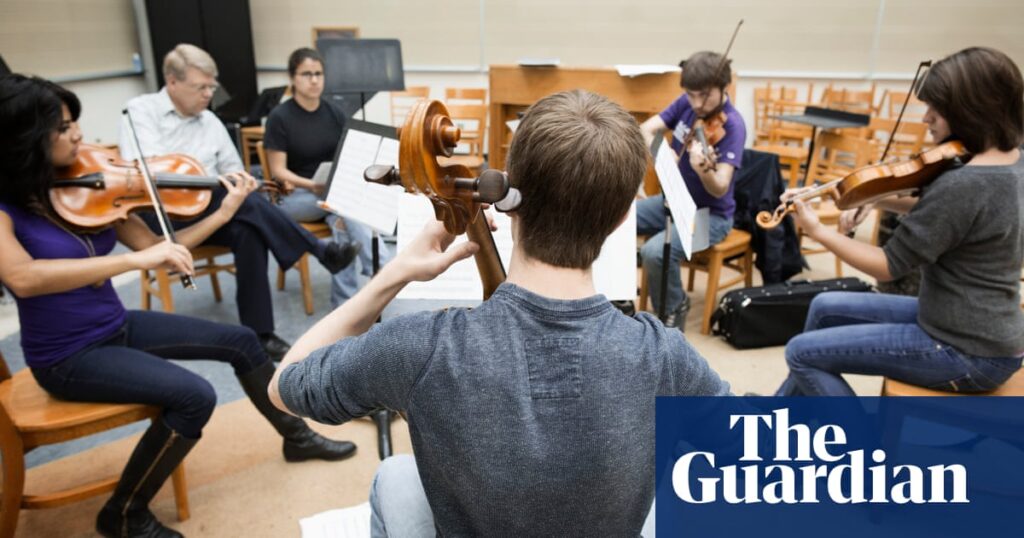[ad_1]
Most people are familiar with the buzz that attending a memorable play, film, concert or art exhibition can trigger.
But now it is official: consuming culture is good for your health and wellbeing – and generates £8bn a year worth of improvements in people’s quality of life and higher productivity.
That is the conclusion of the first major UK research to quantify the impact the arts and heritage can have on physical and mental health and the monetary value of the advantages they bring.
Going to an arts event or taking part in a cultural activity, even only occasionally such as every few months, confers an array of “significant” benefits that can include alleviating pain, frailty, depression and dependence on medication, the government-commissioned review has found.
“Engagement with performance-based art such as plays, musicals and ballet, and particularly participation in music, is linked to reductions in depression and in pain and improved quality of life,” said Matthew Bell of Frontier Economics, a co-author of the research.
“We can value those impacts in terms of reduced costs to the NHS, increased productivity at work and improved quality of life.” It may even help postpone the onset of dementia.
The study, undertaken for the Department for Culture, Media and Sport (DCMS), was a collaboration between Frontier and the World Health Organization’s Collaborating Centre for Arts and Health, which is based at University College London.
Prof Daisy Fancourt, the director of the WHO centre and also a co-author of the research, said it had shown that “arts engagement has diverse and tangible effects on health, from supporting cognitive development and protecting against cognitive decline, to reducing symptoms of mental illness and enhancing wellbeing, reducing pain and stress, via the same neurological and physiological pathways activated by medication, reducing loneliness, and maintaining physical functioning, thereby reducing frailty and age-related physical decline.
“Arts engagement can help to reduce unnecessary pressure on health services, through helping individuals to manage their own health more proactively, such as staying physically active and socially engaged, and reducing the need for inpatient hospital and nursing home stays.”
The report cites 13 different groups of people – from the young to the old – whose health and wellbeing improved when they attended or participated in artistic pursuits, evidence showed. For example, over-65s who took drawing classes every week for three months at their local museum, in an initiative called “Thursday at the museum”, created a financial dividend of on average £1,310 each from going to see their GP less and feeling better about their lives.
Similarly, a study of 3,333 young adults aged between 18 and 28 found that those taking part in organised artistic, musical or theatrical activities felt happier and that their lives had more meaning and value as a result.
Consuming culture and taking part in creative pursuits such as painting brings individuals worth an average £1,000 a year, added Bell. Frontier used Treasury and National Institute for Health and Care Excellence (Nice) methods of estimating improvements to quality of life when reaching their conclusions.
Most (£7bn) of the £8bn benefits to society which Frontier calculated that culture and heritage bring about comes from people’s improved quality of life and the other is from improved productivity at work.
The findings “suggest that not only could further arts investment be valuable for individuals and the health service as part of a preventative health agenda, but also any cuts to arts funding or provision have to be considered a public health risk with individual and societal economic ramifications”, added Fancourt, who also runs UCL’s social biobehavioural research group.
Chris Bryant, the minister for creative industries, arts and tourism, said: “The research, commissioned by DCMS, shows how culture and heritage can directly impact our lives, improving our physical and mental wellbeing, and highlights the importance of preserving our rich heritage to ensure it can enrich the lives of many for years to come.”
[ad_2]
Source link

